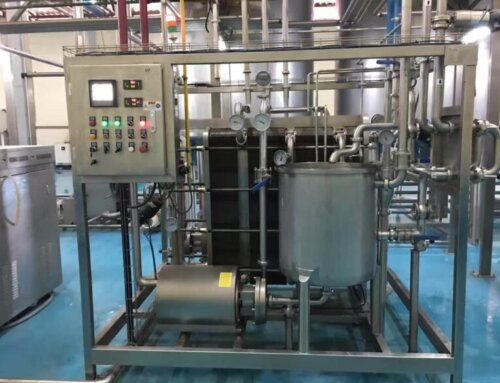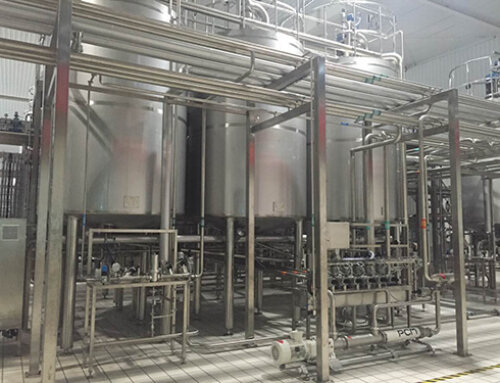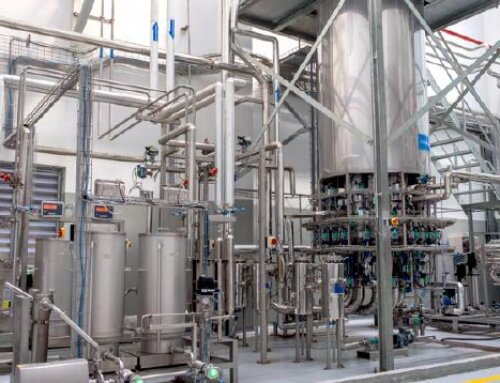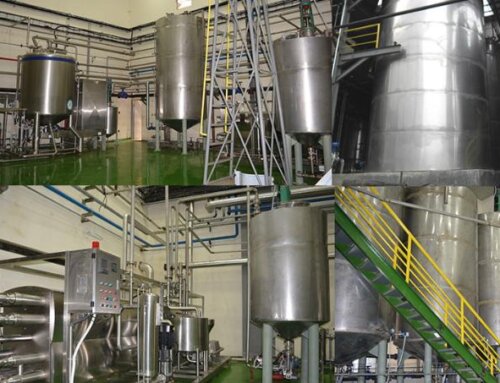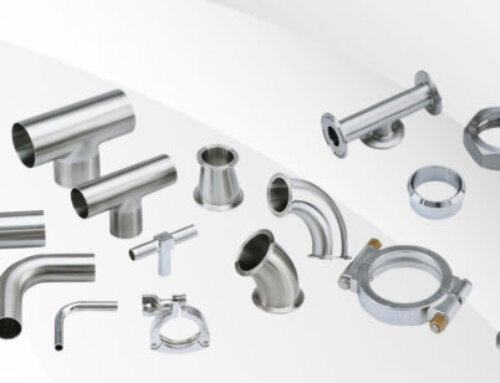Sterilization is the key equipment in food and beverage processing. Food sterilization is to use food raw materials or packaging products as the object, through the sterilization of microorganisms in food, in order to achieve quality stabilization and extend the shelf life of food. According to different factors, we also have different classifications of sterilization machines:
Sterilizing Medium
—Hot water sterilization: This kind of sterilization method is the most common in food and beverage processing, such as tubular UHT sterilizer and plate pasteurizer. The principle of this kind of sterilizer is to use steam to heat hot water, and then the hot water and the material exchange heat. During the heat exchange process, the protein, nucleic acid, enzyme in the microorganism body are irreversibly destroyed and inactivated, thereby killing the microorganism And bacteria to achieve stable product quality.
—Steam sterilization: This sterilization method is particularly suitable for materials with high heat sensitivity and nutrient content, such as cow milk, plant-based milk, etc. The representative sterilizer is Direct Steam Injected/Infusion Sterilizer(DSI sterilizer), which uses about 150℃ of food-grade steam to directly inject the material and heat exchange between the materials, usually lasting only less than 1 second, which can kill bacteria and protect the flavor and nutrition of the product to the greatest extent.
–-Ozone sterilization: Use the strong oxidizing property of ozone to oxidize and decompose the enzymes needed for the internal glucose of bacteria to inactivate and kill the bacteria. This type of sterilization is generally used in the fields of fruit and vegetable preservation sterilization and purified water sterilization.
—Ultraviolet sterilization(UV sterilizer): Ultraviolet rays in the range of 240~280nm most kill and destroy the molecular structure of DNA (deoxyribonucleic acid) or RNA (ribonucleic acid) in bacteria and viruses, causing growth cell death and (or) regenerative cell death, To achieve the effect of sterilization, mainly used for the sterilization of drinking water and food packaging containers.
—Microwave sterilization: The thermal effect of microwave on bacteria is to change the protein so that the bacteria lose their nutrition, reproduction and survival conditions and die. This kind of sterilization method adopts low-temperature method (72-85℃) to process the materials, which can ensure the nutrition and flavor of the food to the greatest extent. It is usually used for the sterilization of spices and grain products.
—Filter sterilization: using ultrafiltration membranes and reverse osmosis membranes or ceramic membranes to physically retain (membrane pore size is 0.45μm and 0.22μm smaller than microbial cells) to remove bacteria in liquid or air to achieve Sterile purpose. Mainly used for sterilization of beer or rice wine.
—Hydrogen peroxide or chlorine dioxide sterilization(ClO2, H2O2 sterilization), this method is also called the chemical sterilization method, it does not directly sterilize food, but cleans and sterilizes food containers or food processing equipment, such as packaging bottles and caps, etc.

Sterilizing Pressure
Normal pressure sterilization: pasteurization and spray cooling sterilizers are all normal pressure sterilization. The sterilization temperature of this kind of sterilization method generally does not exceed 100 degrees and is carried out under normal pressure.
High-pressure sterilization: retort sterilizer, high-pressure processing sterilizer (HPP sterilizer), etc. The HPP sterilizer is using water as the medium to apply a pressure of 400-600 Mpa to soft-packaged food or use high-grade hydraulic oil to apply a pressure of 100-1000 Mpa in a closed ultra-high-pressure container, so as to kill almost all of the bacteria, molds and yeasts, and will not cause nutritional damage and flavor changes like high temperature sterilizer. This type of sterilizer is generally used for sterilization of heat-sensitive cold press juice.
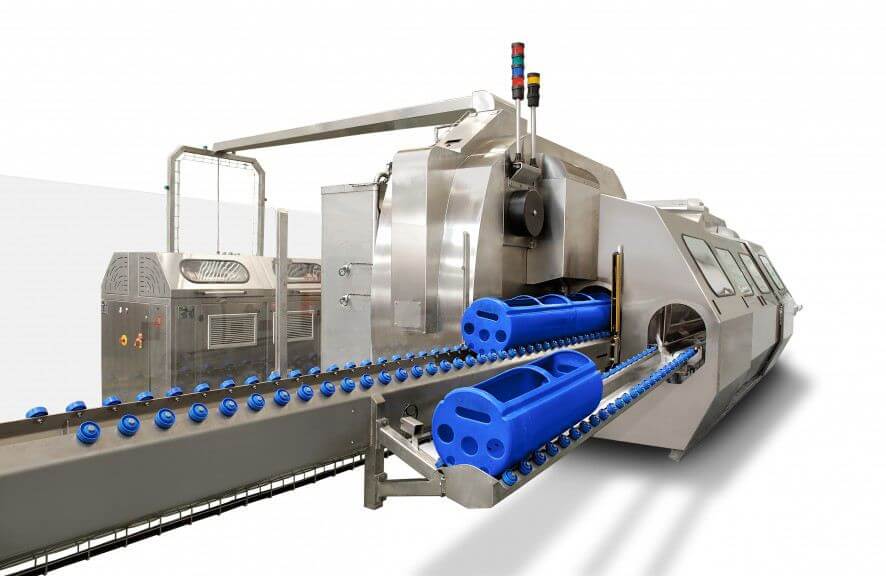
The Heat Exchanger Structure Of The Sterilizer
Plate sterilizer: it uses stainless steel plates as heat exchangers, with high heat exchange efficiency, suitable for low-viscosity materials low-temperature pasteurization such as fruit juice, milk, etc.
Tubular type sterilizer: double-layer stainless steel tube as heat exchanger, suitable for ultra-high temperature sterilization(UHT) of viscosity materials such as concentrated juice, NFC juice, milk, etc.
Tube-in-tube sterilizer: The three-layer concentric stainless steel tube is used as the heat exchanger, which is suitable for sterilizing materials with high viscosity, such as concentrated tomato paste, mango puree and other materials.
Scrape type sterilizer/scrape surface heat exchanger: The stainless steel cylinder is equipped with a scraper, which is suitable for the sterilization of very high-viscosity materials, such as margarine, butter, and banana puree.

Sterilizing Products
Raw food materials sterilization: such as pasteurizers, UHT sterilizers, etc. The food materials in the pipeline directly exchange heat with the heat medium, so as to achieve the purpose of killing bacteria.
Packaged products Sterilization: such as spray type pasteurizing cooling tunnel, HPP sterilizer, water bath pasteurizer, retort sterilizer, etc. these equipment are used to sterilize food and beverage materials in packaging containers such as bottles and cans.

Continuity Of Sterilization
Continuous sterilization: pasteurizer, UHT sterilizer, spray sterilization machines, etc. are all continuous sterilization.
Batch sterilization: such as retort sterilizer, batch sterilization tank. Because the sterilization time of the retort sterilizer lasts 30 minutes, the food baskets are sent into the retort in batches during the sterilization process.

Control Method Of Sterilizer
Fully automatic PLC control: the sterilization of materials is fully automatic PLC control, including material in and out, sterilization temperature and holding time, CIP cleaning and flow rate, etc. Such as tubular type UHT sterilizer.
Semi-automatic PID control, material feed, liquid level, flow rate, CIP cleaning, etc. are manually controlled, only the sterilization temperature and discharge/reflux switching are automatically controlled (special discharge temperature, such as yogurt discharge, is also automatically controlled), and the LOGO system is generally used, such as a semi-auto plate pasteurizer.

